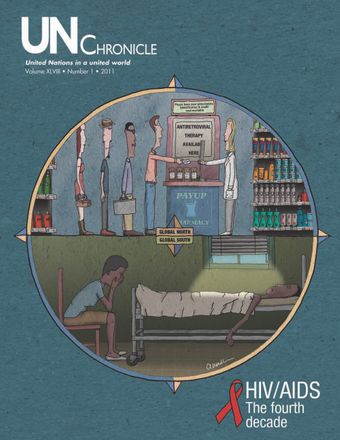-
Asleep at the wheel
- Source: UN Chronicle, Volume 48, Issue 1, Apr 2012, p. 22 - 23
- French
-
- 17 Apr 2012
Abstract
The world has been living with the HIV/AIDS epidemic for some thirty years, and prevention methods have been scientifically proven and disseminated to the public for nearly as long. Yet, there are, according to the Joint United Nations Programme on HIV/AIDS (UNAIDS) High Level Commission on HIV Prevention, at least 7,000 new HIV infections every day—an alarming number that indicates HIV/AIDS awareness is at an unacceptable level of neglect by governments, civil society, and the private sector. There was a strong worldwide effort towards HIV prevention when the disease began spreading rapidly throughout the developing world in the early 1990s but, more recently, a disproportionate amount of funding has been directed towards treatment, rather than prevention. Obviously, prevention is the most effective method in slowing down the spread of this terrible disease, but decisionmakers still view HIV prevention as a health problem, not a societal one.




